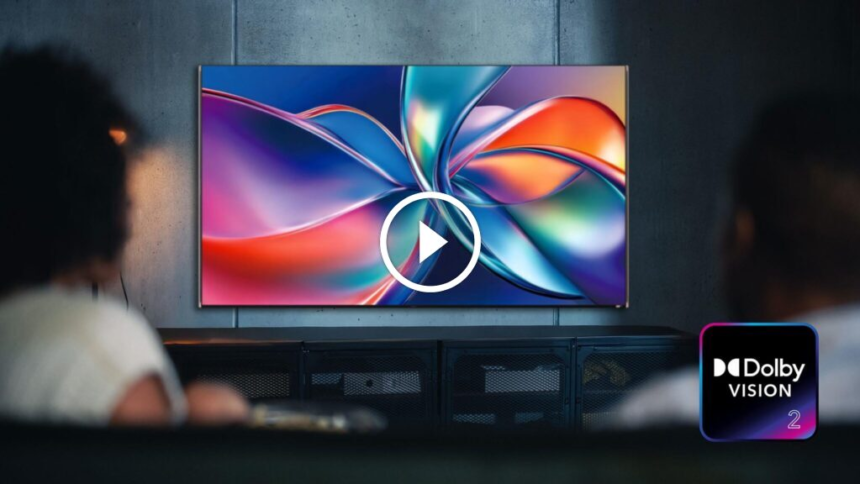Dolby has officially unveiled Dolby Vision 2, the next evolution of its acclaimed HDR format—and it’s already stirring debate among filmmakers, tech enthusiasts, and cinephiles alike.
🔍 What Is Dolby Vision 2?
Building on the precision of the original Dolby Vision, which allowed creators to fine-tune how HDR content appears on screens, Dolby Vision 2 introduces two major innovations:
- Content Intelligence: AI-powered enhancements that adapt content to your viewing environment.
- Authentic Motion: A new motion control tool designed to preserve cinematic feel without unwanted judder.
These features aim to bridge the gap between artistic intent and real-world viewing conditions—especially in homes where lighting and display quality vary widely.
💡 Content Intelligence: Solving the “Too Dark” Problem
One of the most common complaints about HDR content is that it often appears too dark unless viewed on a premium TV in a dimly lit room. Think Game of Thrones’ Battle of Winterfell or Apple TV+’s Silo—both notorious for their murky visuals.
Dolby Vision 2 tackles this with ambient light sensors and AI-driven adjustments that promise to make images “crystal clear” in any lighting condition—without compromising the filmmaker’s original vision. This could be a game-changer for casual viewers who don’t own high-end setups.
🎥 Authentic Motion: A Cinematic Revolution or a Soap Opera Repeat?
Motion smoothing has long been a controversial feature in modern TVs. While some viewers enjoy the ultra-smooth look, many filmmakers and purists argue it ruins the cinematic experience by introducing artifacts and making films look like high-frame-rate home videos.
Dolby’s new Authentic Motion feature claims to solve this by giving creators scene-by-scene control over motion handling. It’s being pitched as the world’s first creative-driven motion tool that maintains cinematic integrity while reducing judder.
But questions remain:
- Will it truly look different from traditional motion smoothing?
- Can it eliminate artifacts?
- Will filmmakers embrace it—or reject it?
📺 Who’s On Board?
Dolby Vision 2 will be available in two tiers:
- Dolby Vision 2: For entry-level and mid-range TVs
- Dolby Vision 2 Max: For premium, high-end displays
Hisense is the first TV brand to announce support, while CANAL+ will integrate it into its content production pipeline. More details are expected at the upcoming Consumer Electronics Show (CES) in January.
🧠 Final Thoughts
Dolby Vision 2 is ambitious, blending AI, creative control, and real-world adaptability. Whether it will be embraced or resisted depends on how well it balances technical innovation with artistic integrity.
Stay tuned for CES updates—and let me know in the comments: Are you excited about Dolby Vision 2, or do you think it’s messing with movie magic?
Also Read:
Related:- Is Quantum Computing The Future Explained 2022
Related:- What Is Blockchain Technology? How will Blockchain Work? 2020
Related:- How IOT AND AI can be used to replace manpower in agriculture 2020
Follow Startupcolleges on Facebook, Instagram, and Twitter for the latest updates from the startup ecosystem. Subscribe to our YouTube Channel for more entrepreneurship, business, and corporate solution videos.







